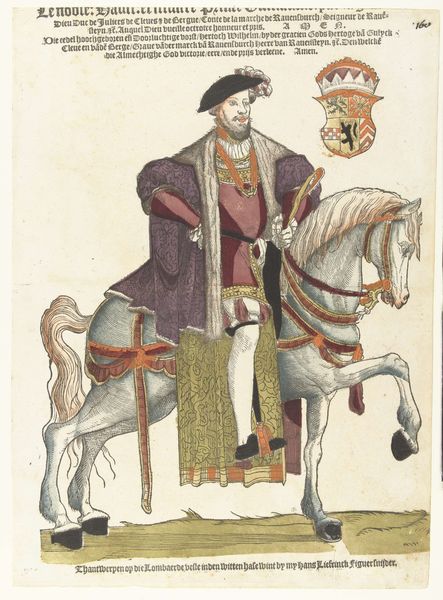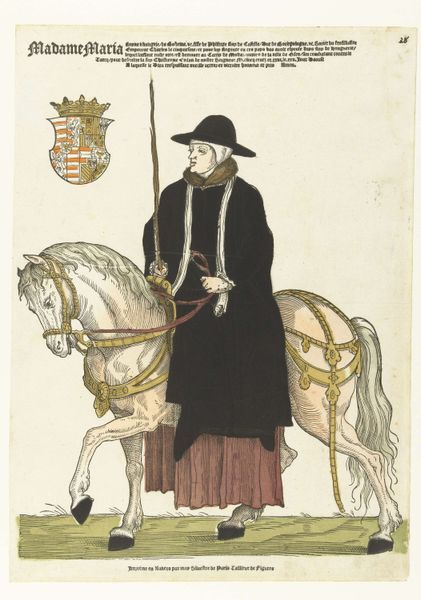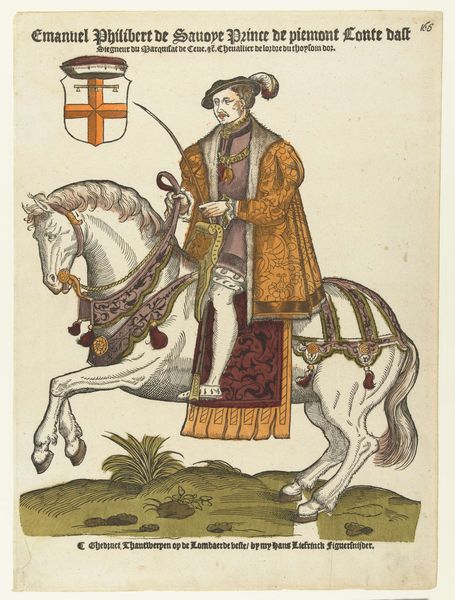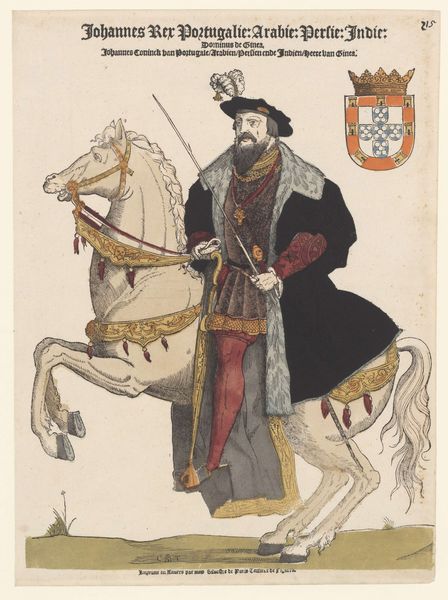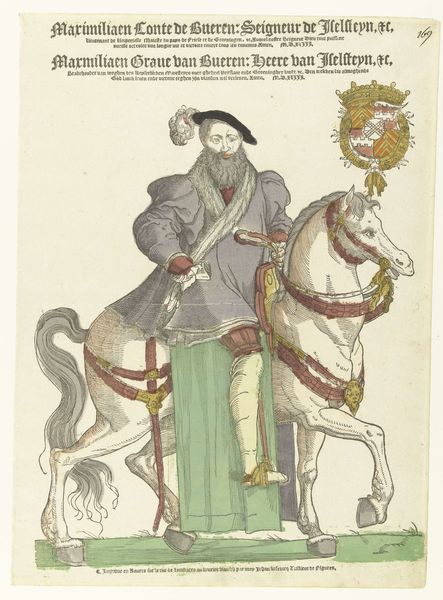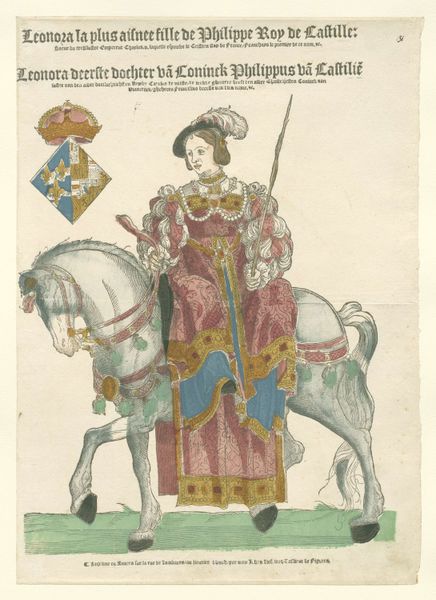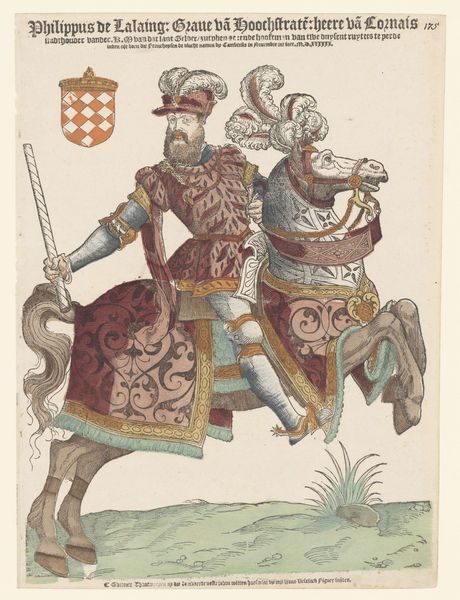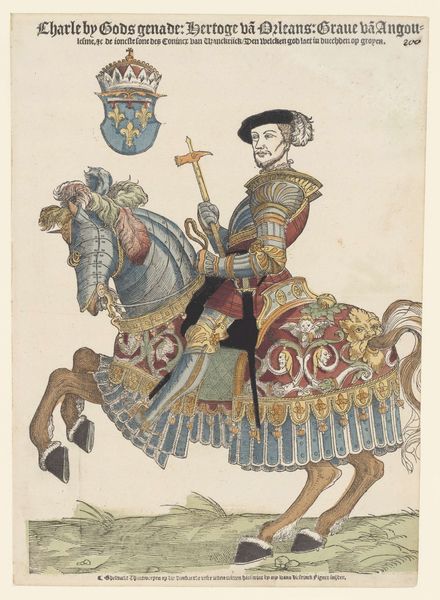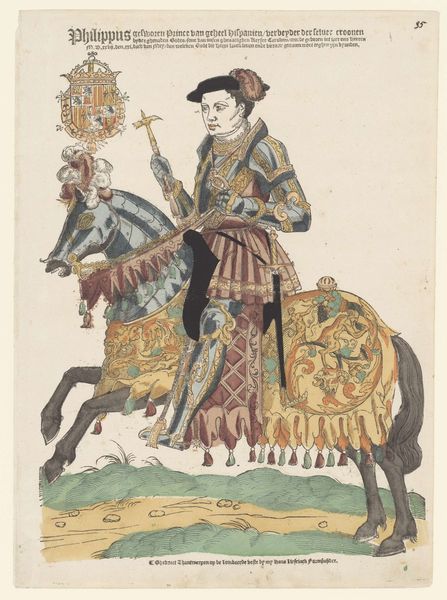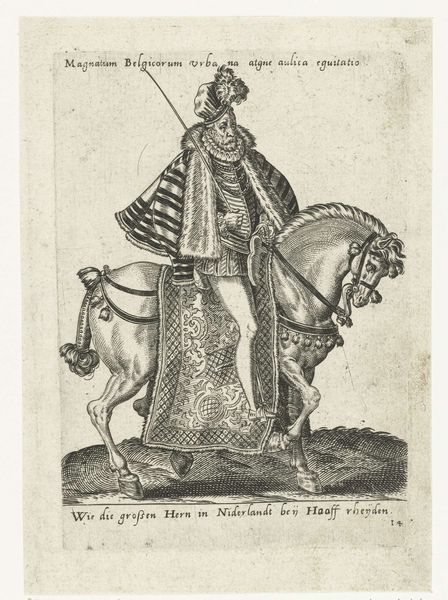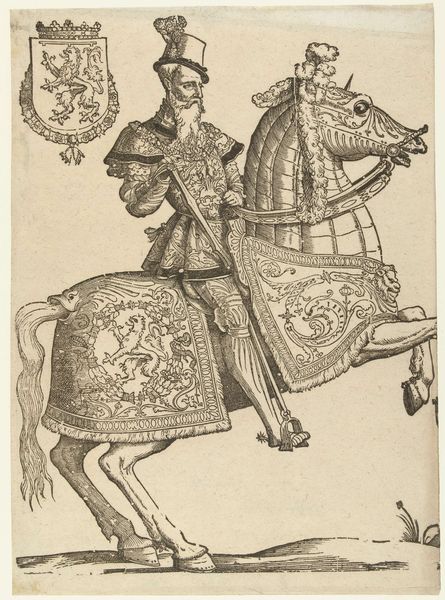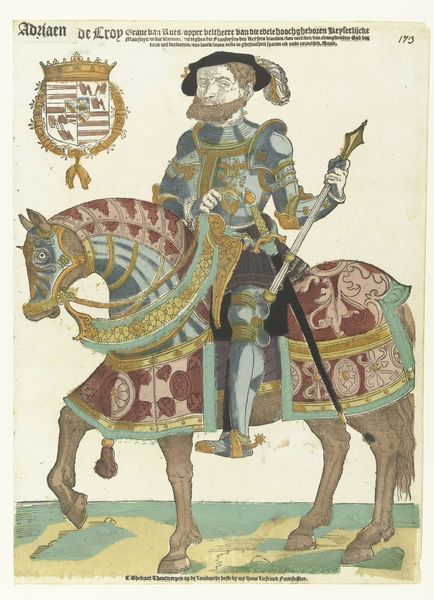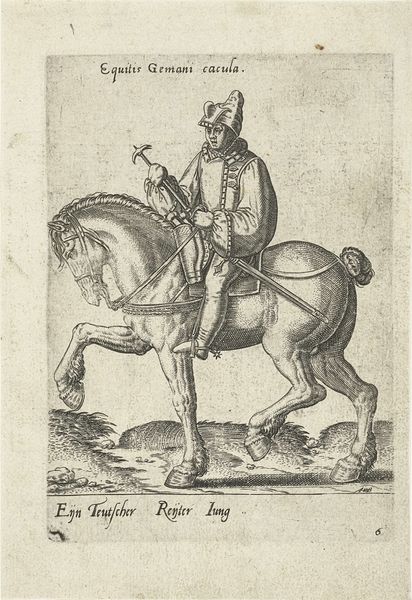
drawing, print, paper, engraving
#
portrait
#
drawing
# print
#
figuration
#
paper
#
11_renaissance
#
line
#
history-painting
#
northern-renaissance
#
engraving
#
erotic-art
Dimensions: height 405 mm, width 284 mm
Copyright: Rijks Museum: Open Domain
Cornelis Anthonisz. created this colored woodcut of Philip of Lalaing in the Netherlands sometime in the first half of the 16th century. But what does it tell us about the subject and the world he inhabited? Portraits of the wealthy and powerful – particularly on horseback – were a common status symbol during the Renaissance. The image broadcasts the sitter's place in the social hierarchy. Lalaing's garments of fur and velvet signal his aristocratic status, reinforced by the family crest displayed in the upper right corner of the print. Equestrian portraits have a long history going back to antiquity, and were often associated with military leadership. However, portraits like this aren't just neutral records. They actively construct a certain image for public consumption. To understand the social function of this portrait, historians might examine estate records, letters, and other documents that shed light on Lalaing's life and times, as well as the artist's other works. This reveals how art is deeply embedded in the social structures of its time.
Comments
No comments
Be the first to comment and join the conversation on the ultimate creative platform.
